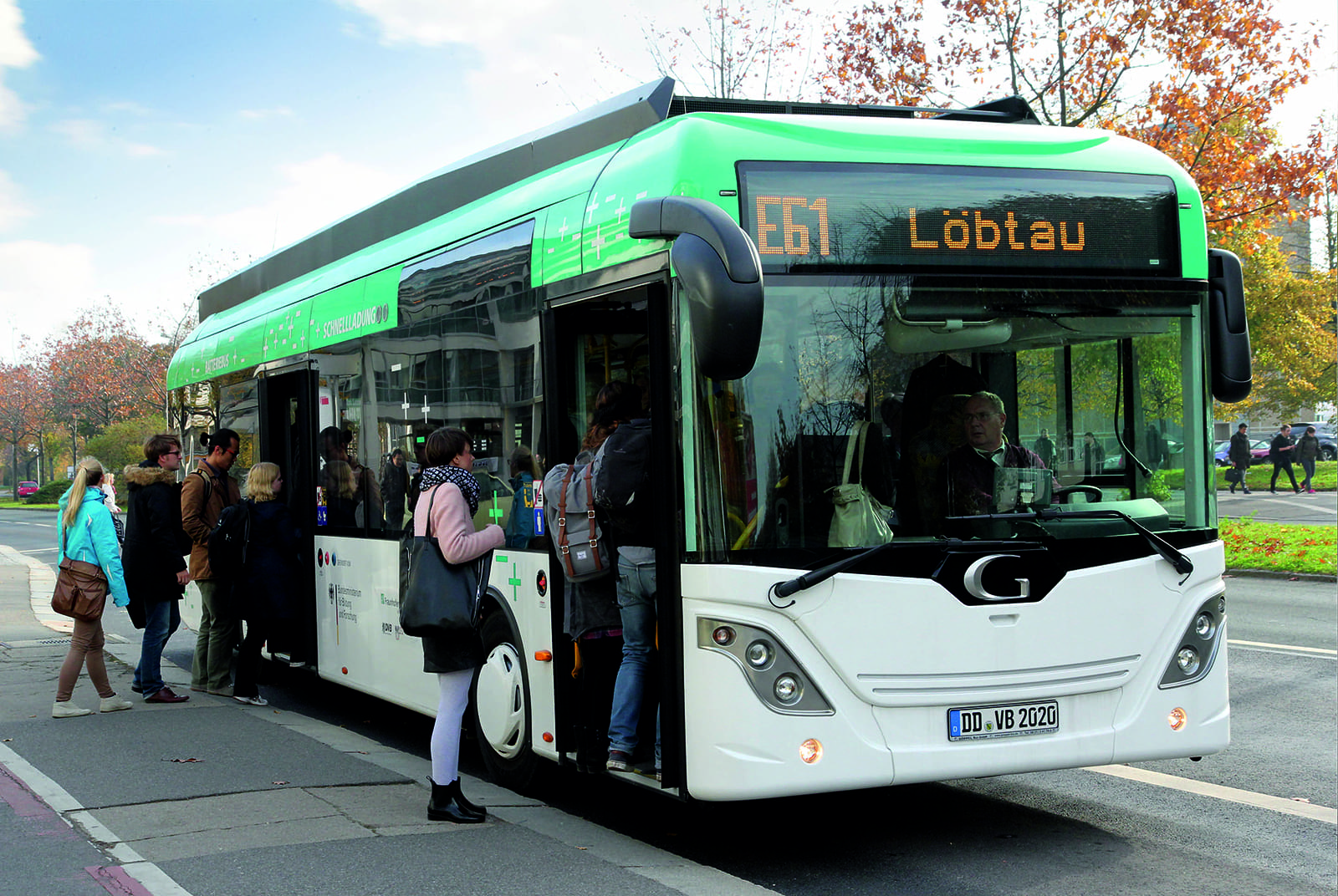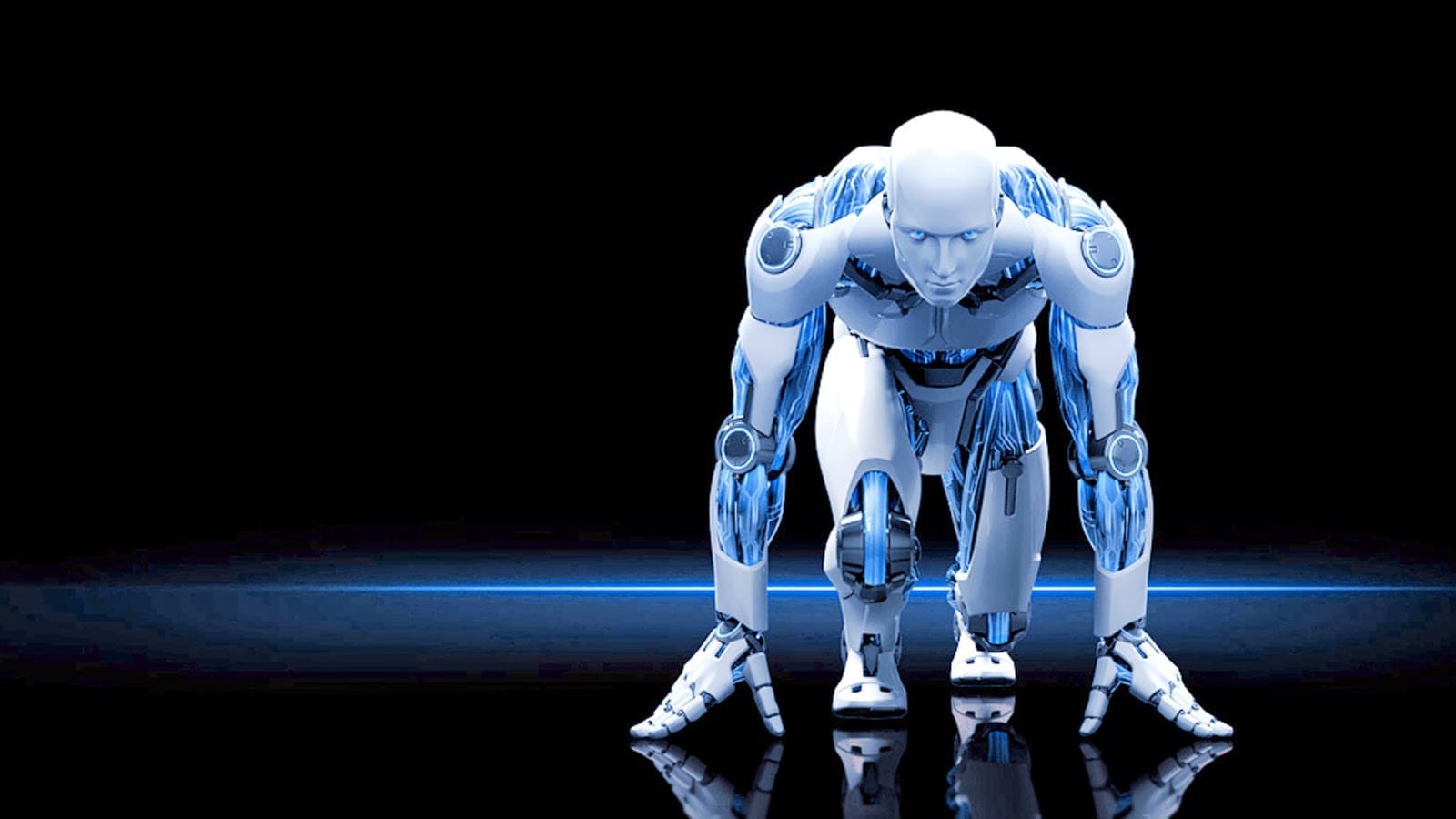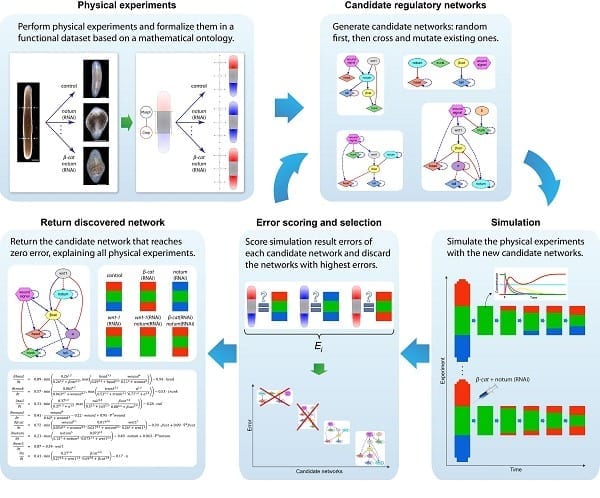
Fraunhofer IVI
Electric buses are an eco-friendly alternative to diesel. With several project partners, Fraunhofer researchers have developed a concept to swiftly recharge buses while they operate routes.
System testing in Dresden has been underway since November last year.
Electric vehicles are supposed to make urban transport more environmentally friendly in the future. Using buses for short-range public transportation is a good way of helping to implement this vision: fixed routes and stops make it easier to plan and provide the requisite infrastructure. In addition, public transport sets an example to the wider public. “However, electric buses will only gain acceptance if they adapt to established operational practices and do not create a need for additional vehicles or personnel,” says Dr. Thoralf Knote from the Fraunhofer Institute for Transportation and Infrastructure Systems IVI. This poses some challenges: regular urban public transport buses travel up to 400 kilometers a day without returning to the depot. To supply the electric energy this requires, huge batteries would be needed, for which there is not enough space available in a bus. The alternative is to quickly recharge the vehicle’s battery while it is serving its route – for example, while the bus is waiting at the terminus. This requires high charging capacity.
Contact system for recharging fitted to roof of bus
Working with several partners in the EDDA Bus project, Fraunhofer scientists have developed a solution that permits fast, uncomplicated recharging. EDDA Bus is part of the Fast Charging Systems for Electric Buses in Public Transport joint research project funded by the German Federal Ministry of Education and Research (BMBF). The solution is based on four core technologies: the Dresden-based company M&P GmbH designed a charging station with very high charging capacities; HOPPECKE Advanced Battery Technology GmbH supplied special batteries designed for such high power capacities; Vossloh Kiepe GmbH was responsible for adapting the power electronics; and finally, the heart of the development work is the contact system located on the roof of the bus, which was realized by Fraunhofer IVI together with Schunk Bahn- und Industrietechnik GmbH.
For the contact head, six powerful contacts were housed in a small installation space. There are two contact poles – one positive, one negative – on each side. Fitted to the top, there is an earth contact and a control pilot, which monitors the earthing. “This means our system meets the most stringent safety requirements,” explains Knote. Schunk Bahn- und Industrietechnik GmbH developed heat-stable components for the contact system. This was necessary because, in contrast to streetcars for instance, where energy is transferred while the vehicle is moving, transferring power to a stationary vehicle generates high local temperatures that would damage conventional components.
The charging process is very straightforward: “We don’t want to burden drivers with extra tasks,” emphasizes Knote.
Read more: Fast charging electric bus does overtime
The Latest on: Electric bus
[google_news title=”” keyword=”Electric bus” num_posts=”10″ blurb_length=”0″ show_thumb=”left”]
via Google News
The Latest on: Electric bus
- Student dies after suffering medical emergency on Orange County school buson May 1, 2024 at 2:45 pm
According to the Orlando Police Department, deputies and crews with the Orlando Fire Department responded to the 3700 block of South Lake Orlando Parkway at 9:40 a.m. on Monday after a teen aboard an ...
- Metro Transit adding 25 electric buses, hoping to go green and save green in the long runon April 30, 2024 at 3:45 pm
MINNEAPOLIS — The Metropolitan Council and Metro Transit are making a sizable investment in clean energy. The council recently approved $34 million to buy new electric buses. The investment is ...
- BRTA Celebrates 50 Years, Electric Buseson April 30, 2024 at 2:33 am
State Sen. Paul Mark tries out the seating in a new hybrid bus. PITTSFIELD, Mass. — The Berkshire Regional Transit Authority is celebrating its 50th anniversary ...
- Goleta School District Trades In Diesel Buses for 2 New Electric Vehicleson April 29, 2024 at 7:17 pm
“We’re trying to get ahead of the curve,” said Shawn Dahlen, the district’s director of maintenance, operations and transportation, who is spearheading the electric bus project. “We currently possess ...
- Billings Public Schools deploy electric buses to improve health and well being of studentson April 29, 2024 at 5:29 pm
BILLINGS, Mont. Billings Public Schools are introducing new electric buses to improve the health and well-being of students and the community.
- Bermuda awarded energy prize for advancing electric bus fleeton April 29, 2024 at 11:48 am
An e-mobility award was presented to the Government in recognition of “strides made in advancing the electric bus fleet”, the transport ministry said today. Wayne Furbert accepted the trophy at a ...
- Metro Transit expanding fleet of electric buses in 'crucial' step toward environmental goalon April 29, 2024 at 10:22 am
A cleaner and quieter ride is coming for some Metro Transit riders as the agency will buy 20 new electric buses and put them in service on local routes by 2026. The acquisitions mark the agency's ...
- Met Council approves expansion of Minneapolis' Metro Transit's electric bus fleeton April 29, 2024 at 9:34 am
The Minneapolis area’s Metro Transit will be expanding its electric bus fleet following the approval of two contracts with bus manufacturer GILLIG with the help of the Metropolitan Council (Met ...
- Electric Buses for Everyone: Volvo’s 8900 Goes Bigon April 28, 2024 at 4:07 pm
Volvo Buses just announced the Volvo 8900 Electric, a brand-new electric bus designed for all kinds of routes. This bus is based on their successful Volvo 8900 bus, but instead of gas, it runs on ...
- Lake Tahoe Unified School District shows off new electric buseson April 26, 2024 at 5:00 pm
SOUTH LAKE TAHOE, Calif. – The Lake Tahoe Unified School District is happy to be on the forefront of new technology, and nothing proves that point more than the district’s acquisition of several ...
via Bing News











